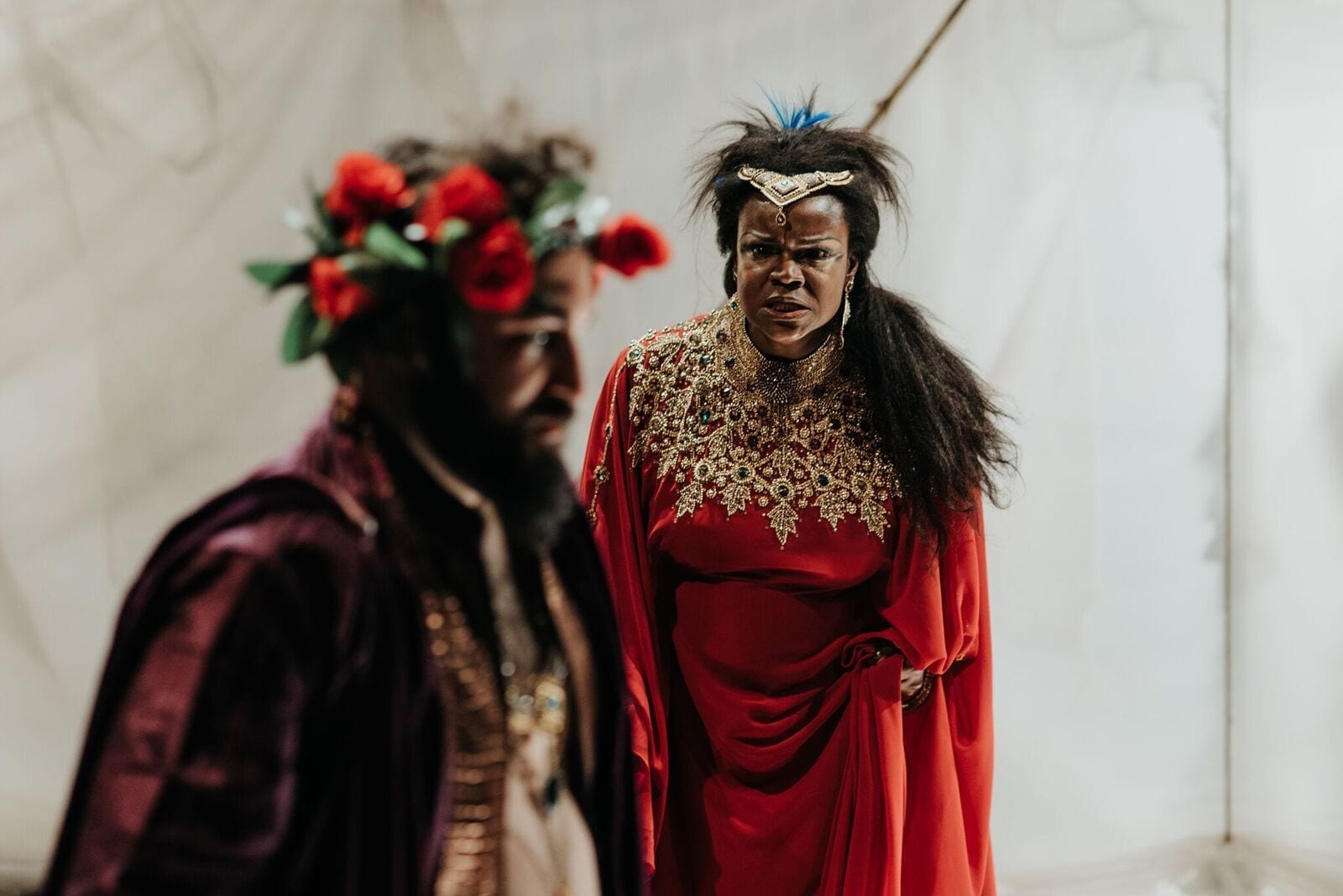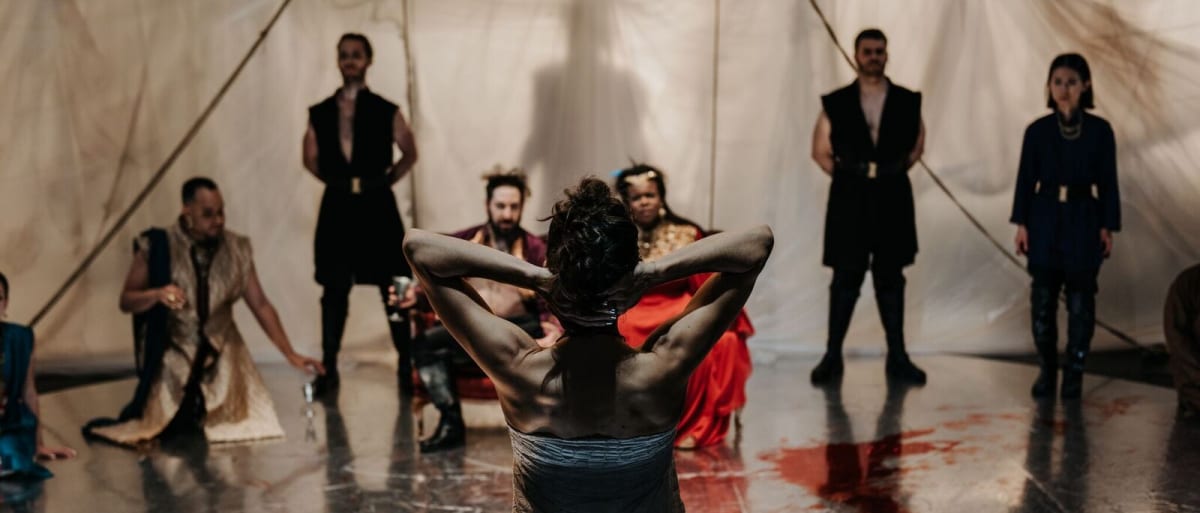Oscar Wilde’s Salome has been the inspiration for countless works of art, film, and even an opera. The story, which is at once familiar and yet freshly titillating, recaptures the imagination decade after decade. Now Salome takes the stage in Brooklyn, presenting an ancient tale of sadness with a decidedly modern take on feminine pain.
The story is short and simple, a tragedy in one act. It is set in the court of Judea on the night of a feast. King Herod – the king of Judea during the lifetime of Jesus Christ – and his wife Herodias are entertaining diplomats and representatives from the likes of Rome to the local, bickering Jewish priests. Herodias’s daughter Salome, the belle of the ball, slips away and discovers Jokanaan – the cryptic John the Baptist, imprisoned by Herod, who speaks in tongues and is heavily guarded. Unlike everyone at the feast, and the guards who cave to her wiles, Salome finds that this Jokanaan, who is concerned only on the holy visions he receives, wants nothing to do with her. And so she falls madly, irrevocably in love with him.
What follows is a story that any Sunday school-attending Christian child could tell you: the king demands that Salome dance for him, and she agrees when he offers her anything she desires. By her will, the head of the prophet is cut off and delivered to her on a silver platter. Wilde, of course, imbues the story with added tragedy: Salome acts out of love, not for political reasons, and when the king sees the perverted truth of her desire, he orders her death as well.
Salome is certainly a drastic departure from Wilde’s prose work. The dialogue is methodically repetitive, like drumming. The characters speak as though they are performing a dance with each other. Salome herself is constantly dancing with her words, even before she consents to dance for the Herod: she dances from the lustful requests of her stepfather; she dances her way into Jokanaan’s cell by manipulating the guard who she knows to be in love with her; she dances as close to the mystical prophet as he will allow her to come.

Director James Rutherford’s new translation is matched well by the cast’s rhythmic interpretation of the lines, recited like scripture or like incantations. But the most interesting feature of Rutherford’s translation: a choice few of the lines seems to be skewed towards a more modern vernacular – particularly Herod’s lines. This gives the eerie effect that Herod’s wife, stepdaughter, and court were caught up in a predetermined dance, to which Herod had not yet learned the steps. Whiny, spoiled, and showboating, Marty Keiser’s Herod fits perfectly into the role of a grasping, abusive monarch and, more broadly, a power-drunk man.
Laura Butler Rivera is absolutely enchanting as the princess Salome. With a stunningly nuanced performance, she captures everything that is essential about Salome’s existence: not just the lust of a bored and pampered princess, but her deep-seated unease at her stepfather Herod’s unyielding gaze, her obvious frustration with her mother, and her acute awareness of her own feminine power. With this portrayal, it’s difficult not to sympathize with her, even as she rolls on the ground, jealously clutching a severed head. Rivera commands the cavernous auditorium of the old church sanctuary that makes up the Irondale Theater.
This production showcases the strength of women and, even more so, their powerlessness. It is in Salome’s highly anticipated Dance of the Seven Veils that we see all that Salome is capable of, even as the tragedy draws nearer to its bloody end. She begins with sensual movements, enticing the king and his courtiers, but as the dance progresses, the king and his court fade from the stage, and Salome’s dance becomes more personal, more tortured. She writhes and rages and contorts, expressing her pain and frustration in a wordless scene that is reminiscent of Sleep No More. This woman is no mere temptress; not a metaphor for the wickedness of women’s desires, but a singular, very sad girl. Take what you will from this Salome; but I found there to be something stirring in this production’s portrayal of a trapped, doomed princess.

